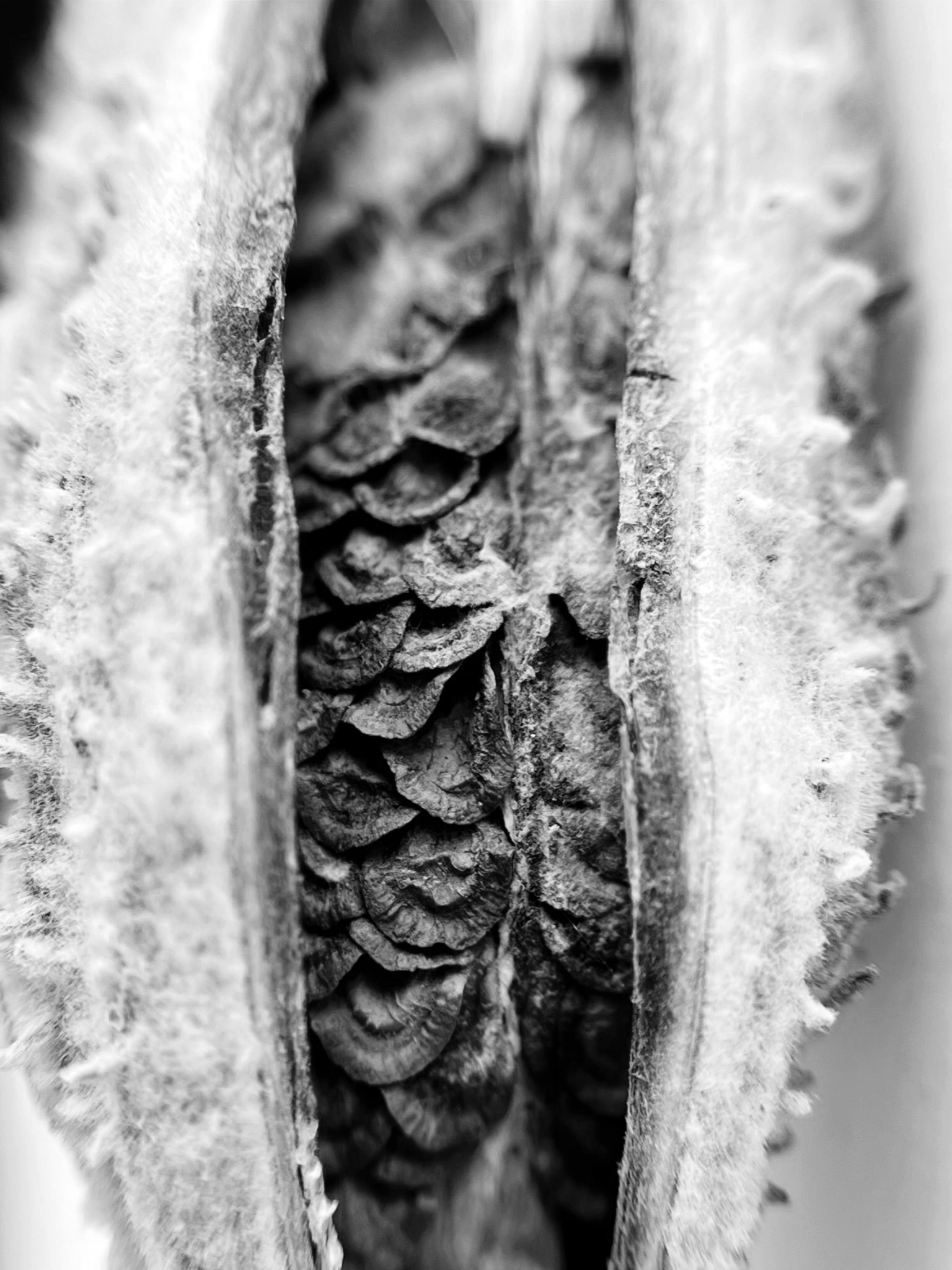Mi'oux Stabler | Seed Protectors
The macro world is fascinating. Blowing things up depicts the hidden beauty that most of the world does not get to experience. Seed Protectors is precisely that - a chance to encounter some of our Indigenous plants' built-in seed protectors up close and how these guardians allow humans to become seed keepers and land stewards.
To protect is to keep safe from harm.
In 2017, I saved my first seed. In 2019, I attended seed school. It was the first time in my academic life that I learned what mattered to me. I realized that a bean was a seed, and a seed was a bean. I comprehended that each corn kernel is attached to its own piece of silk and has its own DNA. I learned to understand that seeds can rest, and during dormancy, they remain protected. A seed protector is a seed keeper - But, must this protection be recognizable only in its human form? Are there other forms of protectors…
Water protectors are activists, organizers, and cultural workers focused on the defense of the world's water and water systems.
I come from the Umoⁿhoⁿ (those who went against the current/Nisude/smoky waters/missouri river). I believe the banks of the Nishude were once adorned with species of plants that no longer exist. Imagine the plants that must have bloomed alongside white lotuses mid-summer, and the type of creatures and critters they would attract. Are these beings gone, too? When I hear water protectors, I am reminded of the human form of protectors, those volunteer defenders of soil and seed alike.
Land defenders is a term that emphasizes pacifism and responsibility to care for ancestral lands, which may be part of the defender's heritage.
Indigenous people of this continent have ancestral responsibilities and rights that others do not. Each of us is born with the opportunity to serve our community in a way that fulfills a need. My energy goes towards forging relationships with the plants from this region that remain. The gardens I work with are Land Back Gardens. I do not see them as “prairie,” “native,” or “pollinator” gardens; they are so much more than that! They are communities rooted in this environment and should be recognized as a part of this modern-day economy. These gardens should be seen on roadsides, parks, and in front of government buildings and hospitals. These gardens should be required at every educational institution and childcare facility, and everywhere else GMO turf lawns are being mowed and sprayed. Until then, our natural defenders must continue to do what they were created to do: Protect.
The seed coat is the outermost covering of a seed. It helps in the protection of the seed from physical stress such as shock, temperature variations or water damage. It also helps the seed to remain dormant within the seed coat and germinates when there are favorable conditions.
I work to capture the innate beauty of the exterior seed coats and how they protect their interior seeds. You and seed protectors are alike. We select the right jacket to keep us warm, dry, and content until favorable conditions avail us. I hope these images of seed protectors cultivate a garden of thought.
All photos were shot on an iPhone 13 Max Pro with the help of a clip-on macro lens that I ordered from Amazon.
Mi'oux Stabler is a member of the Umoⁿhoⁿ Nation whose tribal lands are located in northeast Nebraska along the banks of the Missouri River. She is a proud mother, artist, land tender, and a dedicated cultural advocate. For the past decade, her endeavors have been geared towards the revitalization of traditional languages and land stewardship practices. She has traveled extensively, but currently focuses her work in the ancestral homelands of the Umoⁿhoⁿ people.






